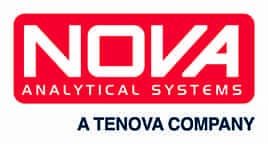Flue Gas Analyzer FAQ’s
- Do you have an installed base?
- Yes, we have been manufacturing continuous and portable flue gas analyzers for over 30 years, and have a large installed base that includes power utility companies, boiler service companies, incinerators, and manufacturers with a furnace, boiler, or incinerator on site.
- What is your average delivery time?
- Because this is a customizable product line with many options, we build each analyzer specifically for each customer. The production process for these analyzers often takes between 8 – 10weeks.
- What gases can you measure and what ranges do you offer?
- We can measure oxygen, carbon monoxide, carbon dioxide, and stack temperature. O2 is 0-25%, CO is 0-1000PPM up to 1-100%, CO2 is 0-20%, Stack Temp is 32-1800°F or 0-1000°C. Other gases such as NO, NO2, or SO2 may also be available – contact NOVA.
- How do you handle corrosive or acidic flue gases?
- For continuous analyzers, it is best to remove corrosive gases from the sample stream before entering the analyzer, or prevent their accumulation at the sensors and detectors. The 7300 Water Wash sample conditioning system dissolves and removes many acidic components from the sample gas. We can also supply upgraded systems designed to withstand corrosive sample gases. For portable analyzers, some options may be available to allow limited analysis of challenging sample gases – please inquire.
- How do you handle particulate and moisture?
- For continuous analyzers, the 7240 Probe & Heated Filter System is used at the sample extraction point to efficiently remove particulate matter without compromising sample flow or inducing condensate formation. A continuous automatic moisture removal system is included in every 7200 Series analyzer. This system is located inside the analyzer and does not require extra installation or extra utilities to operate. Condensate removal filters and portable pre-coolers are also available for use with portable analyzers.
- What if I have a hazardous-rated area?
- Hazardous area purge kits are available. Nova will install these directly on the analyzer cabinet. The customer does not have to do anything extra except provide instrument air to the analyzer. See this page for more info. Nova’s portable analyzers are suitable for General Purpose Areas only.
- How far away from the extraction point can the analyzer be located?
- Typical distance between analyzer and extraction point is usually between 5-50 ft and the customer may use any type of sample line that they wish unless otherwise advised by Nova.
- How fast is your analyzer, what is the response time?
- Sampling time is a function of how far away the sample point is to the analyzer, and the speed of the detectors and sensors. Nova uses a reliable high volume pump to quickly pull the sample into the analyzer. The detectors and sensors will usually reach 90% of reading in less than 20-30 seconds.
- Can your analyzer go outdoors? In hot or cold weather?
- Nova continuous analyzers are built into sturdy weather-proof enclosures. They are available with various indoor or outdoor packages that allow analyzer operation in temperatures as low as -22°F (-30°C). Cabinet coolers are also available for operation in temperatures above 120°F (50°C). Most of Nova’s portable analyzers are suitable for use in 32° to 105°F (0° to 40°C).
- How and when is calibrating the analyzer needed? What cal-gases do I need?
- Every Nova analyzer comes fully factory-calibrated. Manual calibration procedure on portable and continuous analyzers is simple and described in detail in the owner’s manual. For continuous analyzers, optional automatic calibration does not require any user intervention or involvement to perform calibration. Usually, only one or two cylinders of calibration gas is/are required. Recommended calibration frequency is approximately every three-six months depending on the stringency of the application.
- What data communication options do you offer?
- For most portable and continuous analyzers, non-isolated 4-20mA recorder outputs are either included or optionally available. Isolated recorder outputs are available on continuous analyzers. Some portable and most continuous analyzers can be supplied with optional Serial Output Package which allows gas readings to be sent to a personal computer via a choice of USB, RS-232, or RS-485 connection. Optional alarms with LED lights and audible alarms available on portable analyzers. Alarms for continuous analyzers have an LED on the front panel and relay contacts for controlling remedial equipment/processes.
Take a look at some of our Flue Gas Analyzers.

